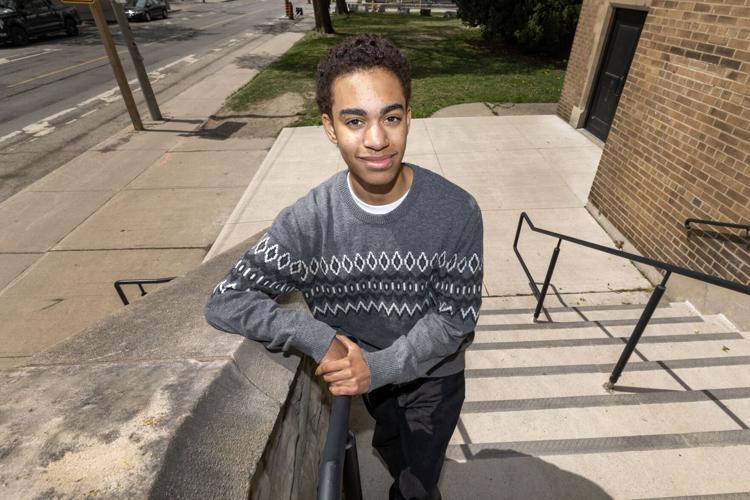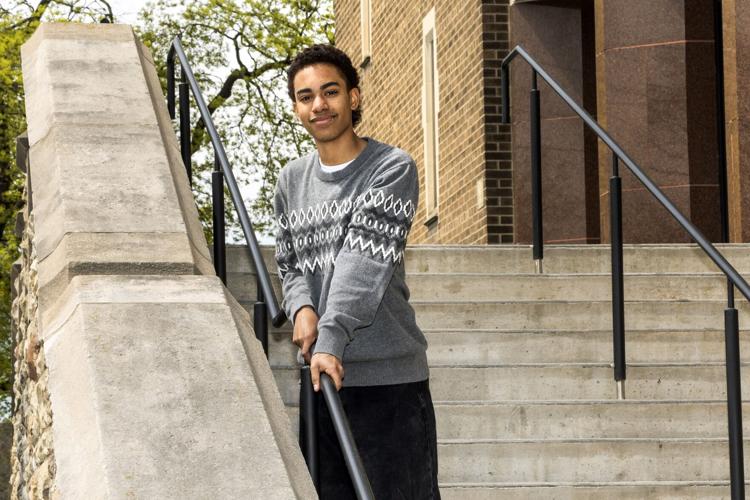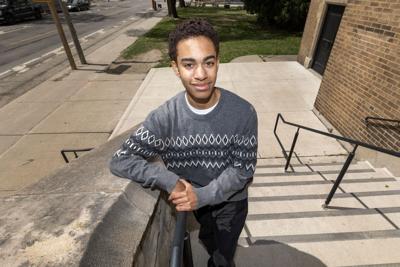By early March, Nevaeh Froman was already swept up in preparations for prom┬ĀŌĆö shopping for the perfect dress and making plans with her boyfriend and a few classmates to rent a party bus.
But one thing stood between her and the May evening she was dreaming about.
A ticket.
Her Hamilton-area public school wouldnŌĆÖt allow students to make a purchase unless they had completed the 40 volunteer hours required to earn a high school diploma in Ontario. Froman was 28 hours short.
ŌĆ£I was getting stressed out,ŌĆØ says the 18-year-old, who had been struggling to find volunteer roles in her community. She had spent her Grade 12 year focused on keeping her grades up and working part time for gas money to get to school.
The deadline to buy prom tickets had left her with three fewer months to collect her hours.
Her scramble is familiar to Ontario students at this time of year.
introduced by the province 25 years ago to nurture responsible citizenship, was well-intentioned, but it has also led to a frantic annual rush by students ŌĆö and parents┬ĀŌĆö to chase down last-minute volunteer opportunities and signatures for verification. At some┬Āschools, the threat of missing prom has become a powerful motivator.
ŌĆ£The general take is that (the provincial measure) has successfully exposed large numbers of students to volunteering who might not have volunteered otherwise, which I think is a positive outcome,ŌĆØ says Megan Conway, president and CEO of Volunteer Canada.
ŌĆ£The challenge is when you make anyone do anything that feels forced, it sort of downgrades or devalues the actual intrinsic motivation of that activity.ŌĆØ
Research consistently shows volunteering provides endless benefits, both personal and communal, but what of the impact on students who are compelled to serve because graduation┬ĀŌĆö or prom┬ĀŌĆö is at risk?
ŌĆ£The purpose of community involvement requirements is to encourage students to develop awareness and understanding of civic responsibility and of the role they can play and the contributions they can make in supporting and strengthening their communities,ŌĆØ Emma Testani, the education minister’s press secretary, told the Star.
But after a quarter-century as part of OntarioŌĆÖs education curriculum, has compulsory civic engagement┬ĀŌĆö at least 112 million hours of it, if not more┬ĀŌĆö┬Āmade things better? Has it fostered a generation of more selfless and civically engaged individuals?
That, says Conway, ŌĆ£is a great question that deserves being answered.ŌĆØ
Mandatory but meaningful?
When Ontario announced changes to the high school curriculum back in 1998, one media headline dramatically warned students that they were to be ŌĆ£sentencedŌĆØ to 40 hours of community service.
It was a take that clashed sharply with the actual vision behind the program. Long-time educator Larry Diachun, who had been seconded by the Ministry of Education to help formally integrate volunteerism into schools as a potential course credit, saw it as an opportunity to enrich studentsŌĆÖ lives. As a teacher, he had been deeply moved by the stories his pupils shared about working in places like seniors homes.
ŌĆ£The very fact that you could make a change in your community, that to me was what was important,ŌĆØ says Diachun.
But with the decision to also eliminate Grade 13 and having to compress five years of learning into four, there was pushback against adding more to the school day, he says.
Instead, a volunteer component was made a c: a minimum of 40 hours of unpaid community involvement to be served on weeknights and weekends.
It was a compromise and followed a groundswell of similar measures , but Ontario became the first in Canada to implement such a plan province-wide. Other followed.
ŌĆ£I feel good about it,ŌĆØ says Diachun, at 86, reflecting on his legacy. ŌĆ£We did the right thing.ŌĆØ
The province revised the policy two years ago, allowing students to begin accumulating hours in the summer before Grade 9. It also introduced guidance to better support students with disabilities and gave school boards greater flexibility to develop processes for approving, recording and verifying hours. During the pandemic, the mandate was waived for the graduating class of 2021 and reduced to 20 hours for the next yearŌĆÖs graduates. It is now back up to 40.
But for ║ŻĮŪ╔ńŪ°╣┘═°student Ocean Ruel, it has never been about the hours. He stopped counting at 3,500.
ŌĆ£It’s gotten to the point where me filling out the volunteer hour sheet is more trouble than it’s worth,ŌĆØ says the 18-year-old. He hit 40 hours in Grade 9.
RuelŌĆÖs service is an exception. The ║ŻĮŪ╔ńŪ°╣┘═°District School Board does not keep board-wide records, but acknowledges some students leave their hours until the last minute.
Ruel, who is graduating this year from Bloor Collegiate Institute, has volunteered for an endless number of one-off informal gigs as well as about 10 organizations, including Mount Sinai Hospital, Black Lives Matter┬ĀŌĆö Freedom School, and most recently with the 519, a supportive hub for the LGBTQ community. His experience also helped him land a part-time job there.
ŌĆ£You instantly see that your actions have a positive effect on someone, and I think that’s really rewarding,ŌĆØ says Ruel, who credits his motherŌĆÖs activism with shaping his sense of purpose.
ŌĆ£If I can help someone, I’ve always known that I should, because we’re all supposed to be in this together, and that was something that was wired into my brain.ŌĆØ

Ocean Ruel says he’s sympathetic to those who struggle to complete their hours.
Andrew Francis Wallace/║ŻĮŪ╔ńŪ°╣┘═°StarRuel believes altruism comes from the heart, not legislation, but he still thinks mandatory hours are useful. ŌĆ£Through volunteering, you’re gaining new experiences; you’re trying to figure out what you want to do with your future, but you’re also giving back to your community.ŌĆØ
In fact, the is to improve job prospects.
Still, Ruel is sympathetic to those who struggle to complete their hours. You never know what someone is dealing with, he says.
If there is data to suggest any students have actually failed to obtain a diploma as a result, no one is inclined to share. The ministry and TorontoŌĆÖs public and Catholic boards would not directly answer inquiries , instead noting a lack of central record-keeping or emphasizing supportive teaching and guidance staff who make students aware of opportunities.
Meanwhile, desperate students turn to each other in online chat forums for suggestions on how to quickly make up their hours. Organizations like , a Mississauga student initiative where volunteers write postcards to lonely seniors, is oft-mentioned.
Solange Hondermann, a spokesperson for Sending Sunshine, confirms a huge volume of requests from students each spring. ŌĆ£We need to verify all hours and provide them with confirmation ... Our team is aware of the time crunch so we all work together to ensure the students can get their verification promptly.ŌĆØ
And then there are those students who share tips on how to fake their hours.
But Volunteer CanadaŌĆÖs Conway says students face barriers, from having to hold paid jobs to not having money or the means to travel to volunteer opportunities.
ŌĆ£The cost of living is real, pressures on young people are real, and we have to be mindful of making it easy for young people to participate,ŌĆØ she says.
In 2000, the rate of volunteering for youth across Canada was 29 per cent; by 2018, but the average hours volunteered were the lowest.
When Ontario first announced mandatory high school hours, more than two-thirds of ║ŻĮŪ╔ńŪ°╣┘═°Star readers, in an informal survey, didnŌĆÖt think it would benefit students. In 2007, concluded that requirement had had no negative impact on studentsŌĆÖ perspectives on volunteering, but on its own was insufficient to produce effects on subsequent civic engagement.
Nearly a decade later, ┬Āconcluded little was still known about mandatory community service and its potential to influence voluntary behaviour.
But a different generation is now participating in these activities, says Conway, and it is a good opportunity for government, educational institutions and volunteer organizations to reassess what the impacts are and to determine how to make the experiences more consequential.
Among the concerns:
ŌĆó School-based requirements emphasize service and involve little classroom reflection, which, notes Conway, ŌĆ£is a critical component of making this meaningful for students” but is often overlooked.
ŌĆó Forty hours is not enough to make a significant connection to an organization and, in some cases, barely gets a volunteer through basic training;
ŌĆó The traditional notion of formal volunteerism just doesnŌĆÖt appeal to younger generations who are involved in more informal ways of contributing, like helping a sick neighbour.
Volunteer Canada, together with various partners, is developing a national volunteer action strategy. ŌĆ£We think it’s important for the country to build some of the volunteering infrastructure,ŌĆØ says Conway. ŌĆ£The last time we had a national strategy was 1967.ŌĆØ
According to an upcoming report from the organization on the evolving landscape of youth volunteering, non-profit and charitable organizations are experiencing a major shortage of formal volunteers at the same time that young people continue to grapple with the lasting effects of pandemic-related learning disruptions and job losses.
Nevaeh Froman┬Āsays the challenge of adjusting from her remote Grade 8 class to in-person high school was one of the reasons she got such a late start on her volunteer hours.
But last month, after consulting with guidance, she was able to submit the hours she had already spent tutoring a young neighbour. While frustrated with the process and the deadline, the experience of helping out was ŌĆ£very rewarding,” she says.
ŌĆ£I would definitely keep volunteering,ŌĆØ she adds.
But not Friday.┬ĀShe has a prom to attend.
































To join the conversation set a first and last name in your user profile.
Sign in or register for free to join the Conversation